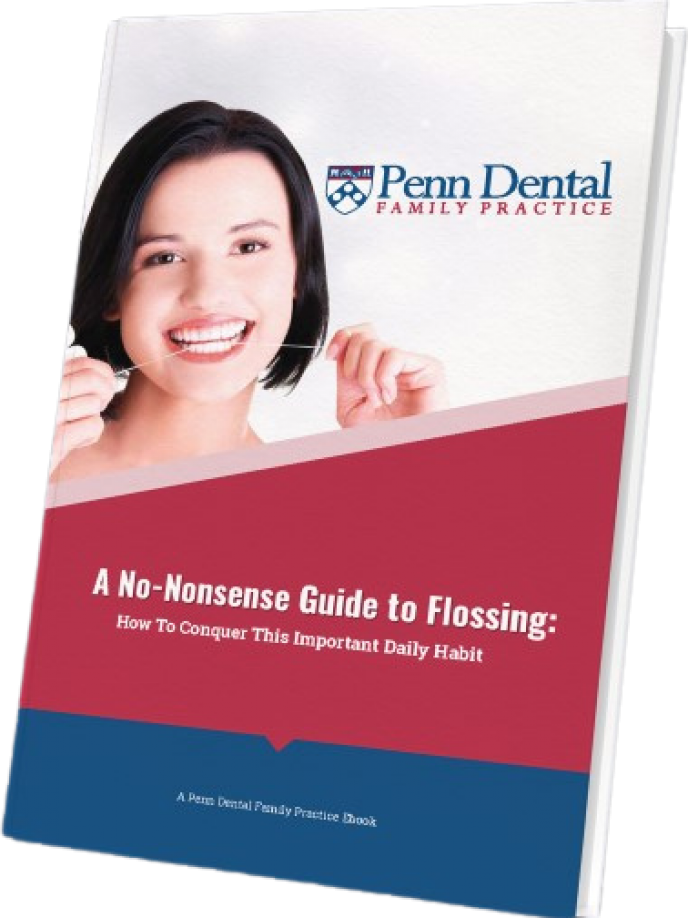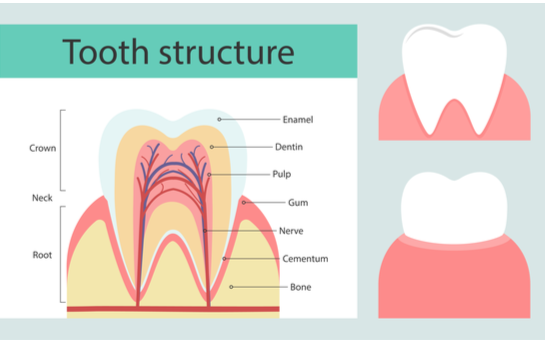Resource Library
Start Reading

If you had to guess, what would you say is the hardest substance in the human body? You may be surprised that the answer is tooth enamel. Primarily made of crystalline calcium phosphate, enamel provides a resilient barrier to protect the teeth from erosion and decay. Despite its strength, certain foods and beverages or years of general wear and tear can cause enamel loss.
And, because damaged tooth enamel does not naturally regenerate, specialized treatment is needed to repair your tooth. Leaving enamel erosion untreated can further compromise your tooth and overall oral health.
If you wonder how to repair tooth enamel, Penn Dental Family Practice (PDFP) offers targeted treatments to prevent enamel from coming off teeth and repair damage that has occurred. Learn more about what causes tooth enamel damage, how to identify enamel loss, and recommended treatment approaches below.
Learn about the dramatic difference 55 seconds per day can make for your lifetime oral health with our No-Nonsense Guide to Flossing

Although wear and tear over time can cause damaged tooth enamel, one of the biggest causes of enamel loss is due to certain foods.

Acidic foods, for example, dissolve the mineral structure of teeth. This process then leads to thinning of the teeth. The types of food and drink that are unfavorable to the health and integrity of tooth enamel include:
Lemons, limes, oranges, and even tomatoes
Raisins, apricots, figs, and prunes
Even if you tend to indulge in sugar-free sodas, carbonation raises the acidity of any drink.
Candy, especially the “sour” variety, can be extremely damaging to your teeth, with some sour candies having acid levels close to battery acid!
When bread is chewed, saliva breaks the starches down into sugar. The resulting paste can adhere to tooth crevices and lead to cavities and enamel damage.
When you drink alcohol, your mouth dries out, reducing saliva production. Saliva normally washes away food particles and keeps food from sticking to your teeth. This can lead to tooth decay and enamel damage.
You may have noticed that some items listed above are often considered “healthy.” Citrus fruits, for instance, are typically packed with Vitamin C, and dried fruits often contain fiber and antioxidants. Rather than forsake these foods completely, dental experts recommend limiting them.
And, if you do indulge, try to eat something else alongside your treat that isn’t acidic. Dairy and calcium-rich foods, for example, can help neutralize enamel-damaging acids. Rinsing your mouth with water after meals and drinking plenty of water throughout the day can also help keep acid from harming your tooth enamel.
 How Do You Know If Your Tooth Enamel Is Damaged?
How Do You Know If Your Tooth Enamel Is Damaged?When enamel erosion starts, you may experience one or more of the following:
While tooth enamel cannot regenerate or repair itself, there are approaches that can both help prevent damage and treat damaged tooth enamel. Take a look at five dentist-recommended tooth enamel repair approaches.
1. Prevention: Fluoride and Preventive Care
With preventive care, you can maintain the strength and health of your tooth enamel and proactively avoid damage. Making sure your teeth are receiving sufficient fluoride for optimal resilience is a key preventive action you can take.
Use fluoride toothpaste and choose supplemental fluoride treatments at your dentist’s office if needed. These actions should be paired with other preventive measures, such as avoiding overly acidic foods, eating a healthy and balanced diet, and practicing regular oral hygiene habits (including regular brushing and flossing).
2. Restoration: Remineralization
Minor damaged tooth enamel can be restored with remineralization treatments. Remineralizing toothpaste and applicants can help replenish your tooth enamel with calcium and essential minerals. These treatments can typically be performed at home.
3. Repair: Dental Bonding
 If damage to your tooth enamel is too advanced for restorative measures to be effective, tooth enamel repair will be recommended. One treatment option is dental bonding. Dental bonding involves applying a dental resin to the tooth surface to protect damaged areas and restore the intact surface.
If damage to your tooth enamel is too advanced for restorative measures to be effective, tooth enamel repair will be recommended. One treatment option is dental bonding. Dental bonding involves applying a dental resin to the tooth surface to protect damaged areas and restore the intact surface.
4. Repair: Veneers
Enamel damage is usually experienced on the front of your teeth. If the outward-facing area of your teeth has experienced a serious degree of damage, porcelain veneers can replace the enamel.
5. Repair: Crowns
In the most severe cases of enamel damage, the affected teeth can be fitted with dental crowns, which cover the entire surface of the tooth. This tooth enamel repair option protects the interior of the tooth and is often recommended in cases where damage is not limited to the front of the teeth.
If you’re worried about your oral health and have questions on how to choose the right oral healthcare provider, use our helpful chart, The Evidence You Need To Pick The Right Dentist, which you can download here for free.
Then, whatever stage of treatment you need—preventive care, restorative care, or treatments to repair damaged tooth enamel—you can be confident our team of dentists at Penn Dental Family Practice can provide you with the most effective care available for tooth enamel loss. To learn more about how to repair tooth enamel, schedule an appointment or contact PDFP today at (215) 898-PDFP (7337).